The days of the email blast are over. Once one of the key tools in the B2B marketer’s toolkit, the general email blast has, thanks to marketing automation, gone the way of the fax machine. It’s been replaced by customized and personalized interactions, tailored directly to your prospects’ information needs and buying stage – and presumably delivering more valuable leads than any generated through an email blast approach.
Marketing automation systems can be incredibly powerful marketing tools. They make fax machines look like – well, fax machines. With marketing automation, you can interact with your prospects and customers like never before, nurturing relationships and seamlessly transitioning to sales. Here, we offer a few suggestions to maximize your investment in a marketing automation solution.
Choose the right marketing automation platform.
The thinking used to be that any platform would do. All it had to do was automate your processes … right? Well, many marketers learned the hard way that there are important differences between marketing automation platforms. Things like ease of use, for example, can make the difference between a system that people are willing to embrace, and one that’s simply frustrating. Another point to keep in mind are the analytics that your solution provides, and how they’re presented to you. If the reports are hard to understand, or it’s challenging to see what’s going on with your marketing, you’ll be at a disadvantage. And lastly, since you’re doing this for sales, your marketing automation solution needs to link you more closely with sales, not drive a technology wedge between you.
Don’t just automate your old marketing processes.
Sure, a marketing automation system makes it easier to send email blasts. But that won’t deliver the value you need – or the content your users expect. Start thinking in terms of individual interactions or journeys, and all the ways you can helpfully maintain contact while supplying information. Compare the impact of an email blast to this customized, yet automated, sequence:- Step 1: You send an email invitation to download your latest ebook to a targeted list of contacts.
- Step 2: You send a thank you note to all the people that downloaded the offer.
- Step 3: A few days later, you send a follow up email to the list of people who downloaded the ebook, offering them a case study relating to that topic.
- Step 4: Finally, when someone downloads that case study, your sales team will get a notification so they can follow up with them (this person is now much more qualified and is likely farther down the buying process).
Keep the focus on content.
Don’t make the mistake of getting so caught up in your new technology that you forget what’s at the heart of your programs. You still need great content and great visuals. And you need to move beyond a one-size-fits-all approach, and think about how to tailor your content to the needs and stages of your prospects. Does it mean you need to generate more content? The short answer is yes. But as you get used to thinking in terms of these targeted information needs, and the different steps in the journey, you’ll learn how to create content that you can use in multiple ways, and how to re-cycle and re-package your content for wider use.
Don’t forget your current customers.
Have you heard the expression, “it’s cheaper to keep ‘em”? We all know that it makes a lot of business sense to retain the customers you have. Marketing automation lets you strengthen relationships with your current customers too. They want to know what’s going on in your industry, how their competitors are using your products, and how they can maximize the value they’re getting from your product or solution. Send them reference cases, news updates, and tips on how to use your solutions.
Use your analytics.
With marketing automation systems, there’s a ton of information right there at your fingertips. Review it often, and adjust your marketing activities in line with what you see. And don’t keep the findings to yourself. Share reports with the C-suite, sales, human resources …. Marketing automation gives you a 360° view on your prospects and customers, so share the wealth with your colleagues. There’s a lot they can learn from it too.
Want to learn more? Download our Free Guide: How to Optimize Your Marketing Automation.
In this guide, we'll walk you through the proper steps for optimizing your existing marketing automation strategy. We'll answer the questions:
- Am I using the right marketing automation software?
- What are the best ways to segment leads?
- How can I use marketing automation to close more deals?
- What other tools can I use to make marketing automation more effective?




